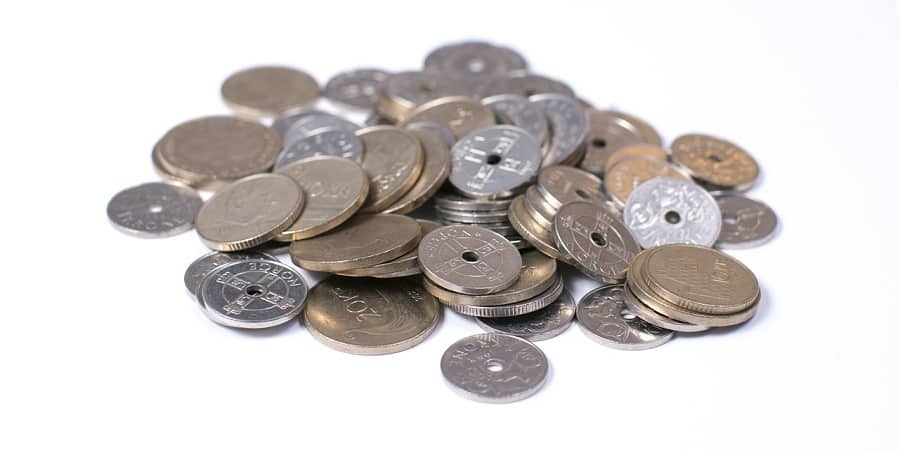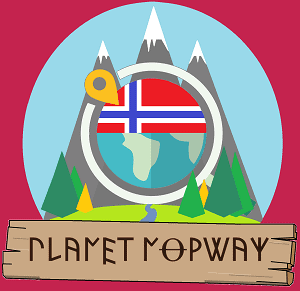Home to a wide array of terrains, the Northern Lights, and all four seasons, Norway has a lot to offer. It is also known for being one of the most expensive destinations in the world.
There is no hiding that Norway is one of the most expensive countries in the world. There are many reasons for this, but the single most important is the fact that labor costs are high. Because most products and services entail the application of human labor, the cost of these products and services is increased.
For Norwegians, the high prices are usually offset by the high wages. But for foreigners, visiting Norway can be an expensive endeavor. That being said, some things are insanely expensive in Norway, while some are surprisingly cheap. Continue reading to learn more about how expensive Norway really is, the answer will surprise you.

Why Norway is so expensive (for foreigners)
Prices of goods and services are the product of the costs associated with producing/providing them. The single most important cost that makes Norway an expensive country is the cost of labor. This is especially true for typically, low-paying jobs such as cleaners, hotel receptionists, grocery store clerks, etc.
To illustrate this, let’s consider a lemonade stand in Norway vs one in Spain. To serve lemonade, the owner will have to buy a lemon press, lemons, sugar, and serving cups. He/she will also have to hire an employee to work in the stand.
It is likely that the owner in Norway has to pay a bit more for the machinery, raw materials, and serving cups. For example, both lemons and sugar have to be imported to Norway. However, the most important differentiator appears when each owner has to pay an employee the minimum wage to work in the stand. This would be around 1050 EUR per month in Spain vs 2450 EUR in Norway.
The wage (cost of labor) is a lot higher in Norway. The result is that the price of producing each serving of lemonade will be a lot higher in Norway, increasing the price the customer has to pay.
This example also illustrates how products and services can be quite affordable to Norwegians, while foreigners found them very expensive. A Norwegian who is paid a Norwegian salary won’t find a serving of lemonade that expensive. But someone from Spain making less than half will find it very expensive.
Ranking Norway on the big mac index
When economists look at productivity and standard of living across countries, they like to apply the theory of purchasing power parity (PPP). In layman’s terms, it states that a basket of goods that costs 20$ in a US supermarket should cost about 17 EUR in Europe, given an exchange rate of 0.85 EUR for 1 USD. if it’s higher or lower, it can be said that the currency is under or overvalued.
In 1986, the magazine the economist decided to create an index for looking at exactly this, known as the big mac index. For their “basket of goods,” they decided to go with the big mac which is served across the world. In addition to providing a lighthearted example of how to apply a complex economic theory in practice, it also gives us the price of a big mac in countries across the world.
In general, developed countries with a high standard of living rank at the top, while developing countries are further down the list. At the time of writing Norway is ranked third, just behind Sweden and Switzerland.
How Norway is affordable (to Norwegians)
Despite being an expensive county for foreigners, most Norwegians are able to live a comfortable life. This is largely due to most Norwegians making a decent salary from their day job, which offsets the high prices. This is best illustrated by comparing how much Norwegians pay for certain basic goods and services in relation to their income to that of other countries.
Average Salary
According to Norway’s Bureau of Statistics, the average monthly salary in Norway after-tax in 2020 was about 4200 USD per month. Let’s compare it to the average in some other countries:
Based on these numbers, the average Norwegian makes about 11% more than the average US citizen, 35% more than the average UK citizen, and about 47% more than the average Italian citizen.
Let’s see how the average Norwegian salary holds up against the others in terms of typical everyday expenses. For this example, let’s take 3 common expenses; rent, gas, and electricity.
Rent
Starting with rent. Let’s look at the rent for a 50 square meter apartment (538 square feet studio apartment by US standards). Obviously, there are huge regional differences, but on average, the price in Norway would be about 1135 USD. For the US it was surprisingly high at around 1200 USD. In the UK it was about 850 USD, and in Italy, it was about 670 USD.
Gas
Next, let’s consider gas for a car with a tank of 50 liters that needs filling twice per month. At the time of writing, the gas price in USD per liter is 2 in Norway, 1.7 in the UK, 0.75 in the US, and 1.8 in Italy.
- Norway: 100 liters at 2 USD/L = 200 USD
- UK: 100 liters at 1.7 USD/L = 170 USD
- US: 100 liters at 0.75 USD/L = 75 USD
- Italy: 100 liters at 1.8 USD/L = 180 USD
Electricity
Finally, let’s consider the cost of electricity. Electricity use depends on a number of factors, but mainly if electricity is used for heating and warm water. Also, climate plays a significant role.
Norway is located in a colder climate and generally uses electricity for both heating and warm water which results in a lot higher energy use. Looking at energy use per capita per month (in KwH) and the cost per kWh in USD across the selected countries we find:
- Norway: 1900 kwh at 0.099USD/kWh = 188 USD
- UK: 375 kwh at 0.262 USD/kWh = 98 USD
- US: 1000 kwh at 0.15 USD/kWh = 150 USD
- Italy: 415 kwh at 0.258 USD/kWh = 107 USD
Results
If we look at these common expenses as a percentage of an average monthly salary we can see that Norway is not expensive on a Norwegian salary.
| Norway | UK | US | Italy | |
| Rent | 27% | 31% | 32% | 30% |
| Gas | 5% | 6% | 2% | 8% |
| Electricity | 4% | 4% | 4% | 5% |
While it doesn’t paint a complete picture, it goes to show that the price levels in Norway are reasonable compared to other countries when you consider the wage levels.
Things that are expensive in Norway
Despite being affordable on a Norwegian salary, there are some things that are simply very expensive in Norway no matter how you look at it.
Alcohol
Prices for alcohol and tobacco are exceptionally high. According to a survey by the Wall Street Journal, the average price of a beer in a supermarket in Oslo is 3.45$. This is more than double that of most US and European cities. One important reason is that alcohol is heavily taxed by the Norwegian government in an effort to curb alcoholism.
Driving license
Getting your driver’s license is notoriously expensive in Norway. The total sum, including required course fees and driver’s education classes, is around 3500$. This is quite a bit more compared to other European countries where it is about 1500$.
Dining out
Eating out is an expensive endeavor in Norway. A survey found the cost of eating out in Norway to be 61% higher than that of the US, and around 50-60% higher than many other European countries. Higher wages or not, eating out is not cheap even with a Norwegian salary.
Things that are cheap in Norway
Contrary to what many believe, there are a few things that are really cheap in Norway.
Electricity
Norwegians use a lot more electricity than their North American and European peers. In large part due to the cold climate and the majority of heating and warm water being provided by electricity. Luckily, electricity is cheap in Norway. The price per kWh of 0.099 USD is 44% cheaper than the US and up to 60% cheaper than most European countries.
Salmon
Norway is known for its quality salmon. The lean, red meat is one of the most sought-after fish in the world, but also one of the most expensive. Norway is home to a booming farmed salmon industry which makes salmon cheaper than in most countries. The average price of salmon filets per kilo is 21$ in most central European countries. The price in Norway is about the same, but considering the higher wage levels in Norway, salmon is rather affordable.
Education
A high-quality education in Norway is offered at a fraction of the price compared to most countries. For children, both primary school and high school is free in Norway. In addition, university students in public universities only pay an annual fee of around 200 USD for a university education.
Also, any student enrolled in a university program in Norway is offered a combination of a student loan and a scholarship at favorable terms. This prevents students from becoming bogged down with mountains of student debt.
Nature
Lastly, one of the best things in Norway that is free is the beautiful nature. Norway believes that everyone should have the right to enjoy the outdoors. Known as the “right to roam”, you can enjoy and explore the Norwegian outdoors and camp virtually everywhere you want as long as you understand and follow a few basic rules and regulations:
- Show respect for nature: Be considerate and thoughtful and leave it as you found it.
- When camping, keep at least 150 meters away from the nearest inhabited house or cabin.
- If you want to stay for more than two nights in the same place, you must ask the landowner’s permission (except in the mountains or very remote areas).
As long as you follow these rules, you are free to explore and consume Norwegian nature, including national parks, free of charge.
Closing remarks
While Norway is clearly an expensive country, don’t be discouraged by the surface-level high prices. Do your research and plan your stay carefully and you might find yourself surprised by how affordable it can be.
